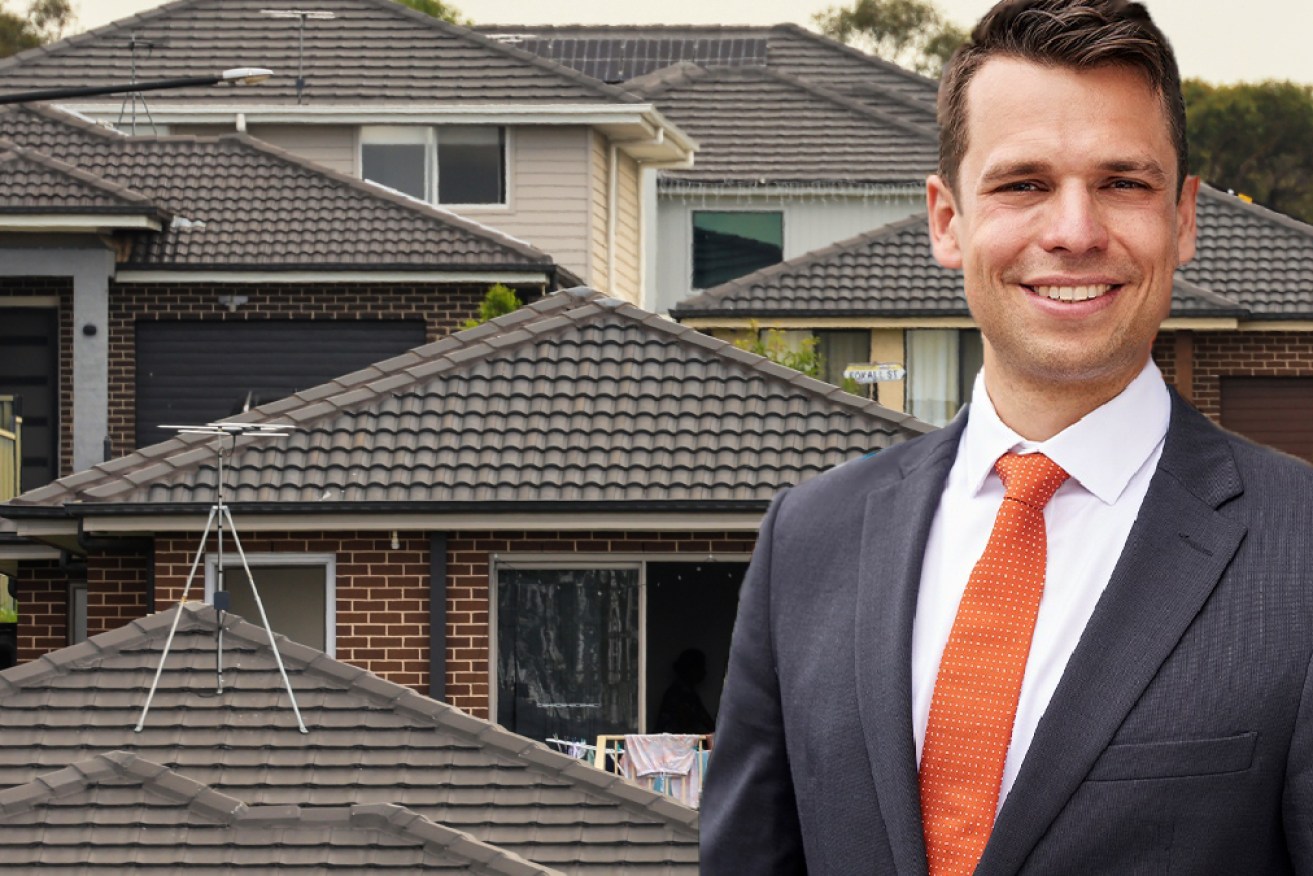The Stats Guy: Like it or not, big changes ahead for our suburbs


Residents in the middle suburbs will see big transformations of their neighbourhoods in the coming years. Photo: TND/Getty
Running a big country like Australia is hard. To keep things manageable we established three tiers of government.
Partly we did this to distribute power, so no entity controls everything. Smart. Mostly though, certain responsibilities are best managed on the local level (waste management) while others are best delegated to the state (hospitals) or federal level (defence).
In Australia, local government holds more powers than in many other countries when it comes to urban planning.
Local councillors have relatively strong vetoing powers and can oppose developments they don’t want in their neighbourhoods.
It’s these strong local veto powers that lie at the heart of the recent power grab of the states. We are especially talking about New South Wales and Victoria here.
When we hear about councils being NIMBYs (not in my backyard), are these just self-interested or incompetent officials desperately clinging to the status quo?
Not at all. We are facing a systemic issue. Your local councillors aren’t incentivised to favour new developments. Someone, at the very least the direct neighbours, are sure to be opposing the development in question.
Everybody’s a critic
“An extension to the school? That’s more traffic in my street! A medium density development? Again, traffic! Also, my view might be blocked. Our local infrastructure couldn’t cope with yet more people. Plus, I like my suburb the way it is.”
The councillors were elected by the current residents and must take their concerns seriously – that’s literally their job. So even if the city as a whole needs more social housing stock, your local government is very likely to veto or at least to slow down such developments. Their residents tell them to do so.
If a development is really important, the Civil and Administrative Tribunals (NCAT or VCAT) will push it through eventually, but housing projects get seriously delayed in the process while population growth isn’t going to slow down.
There is a geographic angle to this story too. The inner most suburbs are generally embracing densification and are comfortable with office towers and large residential developments.
On the urban fringe there are no neighbours to complain, and big green field developments can go ahead relatively unopposed.
Most regional towns want development, actively encourage businesses to relocate, and release enough land to encourage prospective residents to relocate too.
This leaves the middle suburbs. Wedged between the upward growing inner suburbs and the outward sprawling urban fringe, the middle suburbs cling to the status quo.
In Australia we step out of inner suburbs resembling Manhattan and its impressive skyline into a suburban landscape of quarter acre blocks in our middle suburbs. Australian cities are lacking a ring of about 5 to 10 kilometres of medium density dwellings. Think London, Paris, or Madrid.
The technical term for this type of medium density housing development is “Euro block” and is often seen as a Goldilocks solution by urban planners.
You can deliver infrastructure at a relatively low cost, services are available in walking distance, family-sized apartment are plentiful, homes can be heated or cooled more efficiently than separate homes, the courtyards provide semi-private green space, homes are cheaper, mixed use of space benefits local small businesses, and a range of different property sizes can be collocated in the same neighbourhood which makes local downsizing or upgrading more feasible.
So why are Australian cities missing this ring of medium density dwellings?
When cars became affordable in the postwar period – first for the middle class and then for the lower class – families packed up their belongings from their relatively dense inner-city apartments and drove until they could afford a quarter acre block, slapped a brick veneer on top (if they were Greek, they added some columns to the front door), and suddenly commanded their own suburban castle.
Creeping suburbia
The next family drove 20 metres further and repeated the process.
Repeat this for several decades and you end up with cities that are much less dense than their European counterparts.
Berlin for example houses over 4000 people per square kilometre while Melbourne only houses 500 people on the same area.
A Melbourne taxpayer must somehow pay for about eight times the road kilometres than a Berliner and let’s not forget about water, electricity, or public transport costs.
Okay, if medium density housing is oh so great, why don’t we just build it in Melbourne? We simple can’t at this point.
A Euro block requires about nine consecutive quarter acre blocks. Such blocks don’t conveniently enter the market at the same time.
Even if you managed to buy these nine neighbouring blocks, you’d be looking at a housing market hungry for homes, your costs escalated already. There is no way you will build a five-story dwelling, you’ll aim for 25 stories.
Granted, we can’t build a sea of Euro blocks in our capital cities, but we can densify the middle-suburbs. That’s not just my idea, that’s the idea of pretty much every major city.
State governments produce planning strategies called Plan Melbourne (boring name), A Metropolis of Three Cities (Sydney is a bit more lyrical than Melbourne), or my personal favourite, the GARP (Greater Adelaide Regional Plan).
These plans want to manage where population growth occurs. Usually about 70 per cent of growth is meant to occur in infill sites and only 30 per cent on greenfield sites.
By now all political parties in all states get serious about improving housing affordability. The main lever to make housing more affordable will be adding to the housing stock – at least that seems to be the political and academic consensus.
Carrot, then the stick
There are many reasons why we aren’t building enough housing stock (skills shortage, material costs, interest rates, bankruptcies) but one reason, that the states decided to tackle big time, is NIMBYism on a local government level.
The states will set and enforce strict housing targets on local government. At first the states will use the carrot and hand out additional funding to councils fulfilling their targets.
For many councils this will be enough to wave through more developments. For some it won’t and for them the states will use the stick. Existing funding could be withheld, or in extreme cases councils could be put under administration. These aren’t unthinkable scenarios.
Local power could even be withdrawn in a more permanent way. We could see the establishment of something like the Greater London Authority.
If London wants to build hundreds of kilometres of new bike paths criss-crossing the whole city, it can.
In Melbourne or Sydney, dozens of councils would be involved. A Londonesque centralised approach to urban planning has many advantages, that Australian states certainly are aware of, but it also risks the loss of local intelligence in the decision-making process.
Australian states are keen to enforce their housing targets and they will be increasingly tough on local government.
Understandably, local governments hate having powers taken away from them. Expect endless news stories of local mayors railing against the tyrannical, power hungry, or clueless premier. In this power struggle the states will ultimately win.
Therefore, smart local governments don’t fight their state heads on but become pre-emptively more pro-growth to still have a say in the future of their local communities.
Residents in the middle suburbs will see big transformations of their neighbourhoods in the coming years.
These changes will speed up even more in the 2030s when Baby Boomers slowly start dying out of their quarter acre blocks.
Many of these blocks will be turned into townhouses to maximise land values. A collaborative approach between local and state governments will ultimately deliver the best outcome to the Australian people.
Demographer Simon Kuestenmacher is a co-founder of The Demographics Group. His columns, media commentary and public speaking focus on current socio-demographic trends and how these impact Australia. His latest book aims to awaken the love of maps and data in young readers. Follow Simon on Twitter (X), Facebook, LinkedIn for daily data insights in short format.








